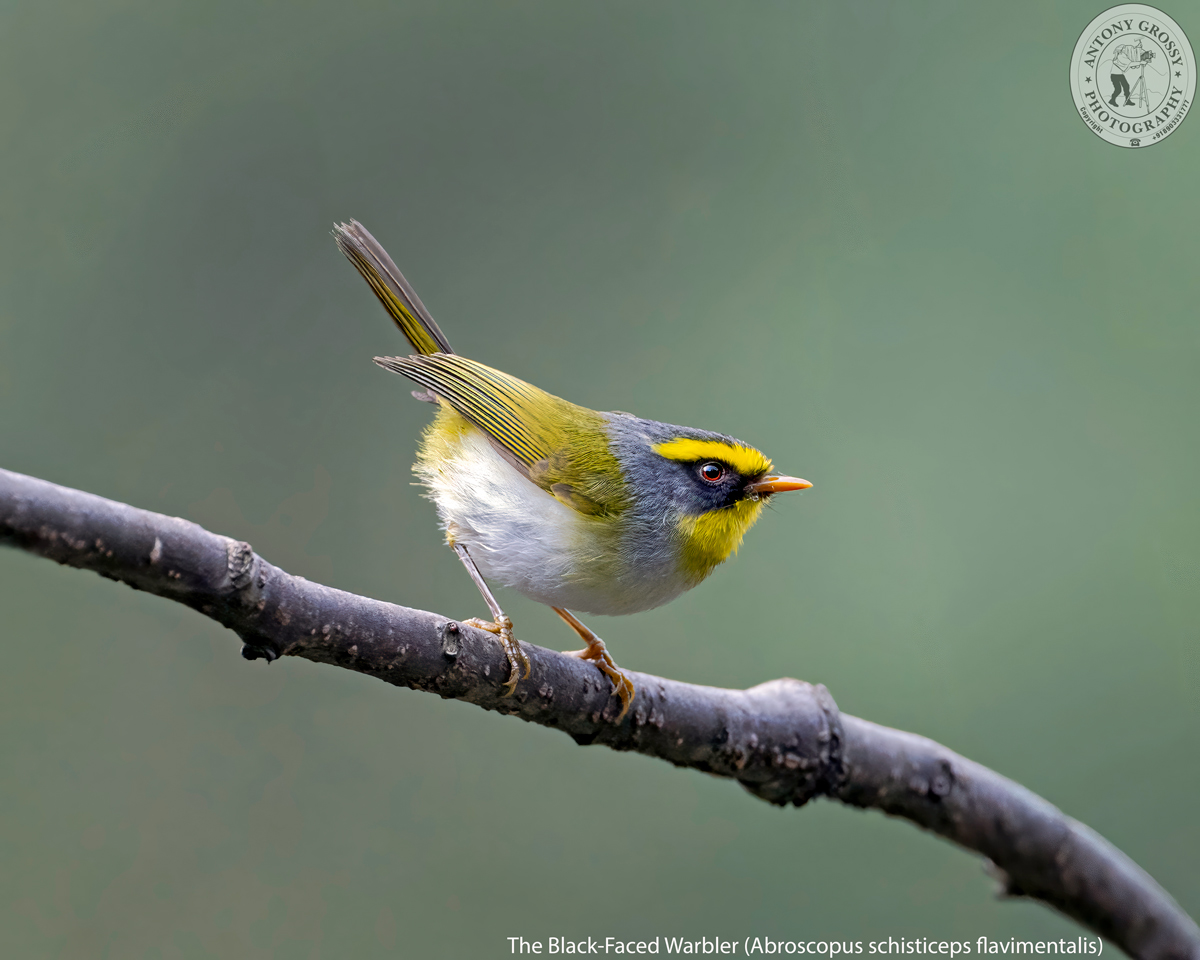

|
 |
| The Cute Looking Bandit Bird – The Black-Faced Warbler |
| The Black Faced Warbler is a brightly-coloured and active small warbler of hilly and montane forests. Often follows other species in mixed flocks, predominantly foraging in the middle layers with Warblers and Fulvettas. Strikingly coloured; greenish-yellow wings and white underbelly are similar to many other warblers, but combination of grey head, black face, and bright yellow eyebrows and throat set it apart from any other similarly-sized species. . . . . . . . . . . . . . . . . . . . . . . . . . . . . . . . . . . . . . . . . . . . . . . . . . . . . .. .. …. ……. . .. … …… ………………………. ………….. ……………….. .. …. …. ……….. … …. ……….. … …. ………… ………….. ………… ………… ….. ………. …………. …….. ……………. …… …. …. ……….. … …. ……….. .. ………… ….. ………. …………. …….. ……………. … The Black Faced Warbler is a small, thumb sized, rather slim warbler with distinctive head pattern. It measures about 10 cms in length and weighs about 6 gms. It has crown, nape and side of neck grey, bold yellow supercilia almost meeting on forehead, black lores and ear-coverts; upperparts olive-green, brightest on rump; wings brownish with yellowish-olive feather edges and fringes; tail brownish with yellowish-olive feather edges, white inner webs of outermost two feathers; throat bright yellow, underparts whitish, washed with yellowish-olive on breast, flanks and undertail-coverts; underwing-coverts pale yellow; iris reddish-brown to dark brown; dull pinkish lower mandible and cutting edges of upper mandible, remainder of upper mandible medium brown; legs rather pale, dull pinkish-brown or greyish-brown. Differs from similar Yellow-bellied Fairy Fantail mainly in having smaller tail without prominent white terminal spots, less uniformly yellow underparts. The Sexes are similar. Juvenile is duller than adult, with grey of head washed olive, supercilium duller and paler, paler yellow on throat and underparts. Three subspecies are recognized all having slightly different colourations and plumage. Races differ mainly in throat colour and intensity of yellow tones in plumage. The Sub-Species flavimentalis found in Bhutan, North East India (Arunachal Pradesh, Nagaland, Manipur and Mizoram) has dullest yellow and most extensive whitish on underparts. . . . . . . . . . . . . . . . . . . . . . . . . . . . . . . . . . . . . . . . . . . . . . . . . . . . . .. .. …. ……. . .. … …… ………………………. ………….. ……………….. .. …. …. ……….. … …. ……….. … …. ………… ………….. ………… ………… ….. ………. …………. …….. ……………. …… …. …. ……….. … …. ……….. .. ………… ….. ………. …………. …….. ……………. … The Black Faced Warbler is found in Bhutan, China, India, Myanmar, Nepal, and Vietnam. Its natural habitats are subtropical or tropical moist lowland forest and subtropical or tropical moist montane evergreen forest with moss-covered trees, ravines, shrubby undergrowth and bamboo thickets; chiefly at 1525 to 2350 mtrs. Resident, although probably some seasonal altitudinal movement; recorded as low as 600 mtr in Cachar Hills of Meghalaya, presumably in winter. . . . . . . . . . . . . . . . . . . . . . . . . . . . . . . . . . . . . . . . . . . . . . . . . . . . . .. .. …. ……. . .. … …… ………………………. ………….. ……………….. .. …. …. ……….. … …. ……….. … …. ………… ………….. ………… ………… ….. ………. …………. …….. ……………. …… …. …. ……….. … …. ……….. .. ………… ….. ………. …………. …….. ……………. … Its Food almost entirely tiny invertebrates. Forages chiefly in upper canopy, especially among creepers, to lesser extent also in lower and middle canopy. Feeds restlessly within outer foliage, frequently flicking wings and flashing tail. Gleans food items from surfaces; also takes small flies on the wing during short flycatching sallies. Typically encountered in parties of 10 to 15 individuals associating with mixed-species flocks outside breeding season, tumbling like falling leaves as they drop from upper to lower canopy. . . . . . . . . . . . . . . . . . . . . . . . . . . . . . . . . . . . . . . . . . . . . . . . . . . . . .. .. …. ……. . .. … …… ………………………. ………….. ……………….. .. …. …. ……….. … …. ……….. … …. ………… ………….. ………… ………… ….. ………. …………. …….. ……………. …… …. …. ……….. … …. ……….. .. ………… ….. ………. …………. …….. ……………. … Its Song is a thin and ethereal, a high-pitched tinkling tirririr-tsii tirririr-tsii tirririr-tsii or tit sirriri-sirriri sirriri tit-sirriri and so on; subdued tit seems to be a contact note given when foraging. . . . . . . . . . . . . . . . . . . . . . . . . . . . . . …………………….. ………………………………………………………………… ………………………………………………………………………………………………………………………………………………………………………………………….. ………………………………. .. ……… …… … …. ……….. ……….. .. .. Description Credit Birds of the World (The Cornell Lab), Oiseaux, Animalia, Ogaclicks, Birds of India | Bird World, Bird Count India & Wiki. |
  |
|
|

































































































































































































































































































































































































































































































































































































































































